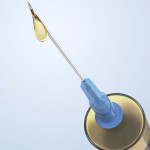
At this time, there are over a dozen different types of injectable fillers that are commercially available. This is very confusing to patients since they all have different names, have slightly different to radically different chemical compositions, and the duration of their effects can range from as short as six weeks to over one year.
Despite these apparent vast differences between the numerous injectable fillers, they really are more similar than different. All are FDA-approved and have the same clinical indications. When you distill it down to what matters most, the important issues to patients is two-fold…how long do they last and what do they cost? In other words, which ones provide the best value?
As a general rule, there is some correlation between duration of action and cost. The shorter-lasting injectable fillers are the cheapest and the longer-lasting ones are the most expensive. While there can be wide variability in what a physician or office charges across the country, their still remains a relationship between cost and volume retention as that issue is also reflected on the front end. (what the doctor pays to buy it from the manufacturer)

The question is…why do I like Juvederm over the many other injectable fillers products? Being composed of hyaluronic acid (a sugar molecule) and cross-linked in such a way to help resist early degradation, it is incredibly safe and will last close to a year. The manufacturer may state that it lasts a year after injection, but I have found that to not be as accurate as their marketing. It is closer to 9 months most of the time. The time of 9 to 12 months is an interesting window of product duration. For those injectable fillers that last longer than one year, there is an inevitable increase in complications (nodules, inflammatory reactions) which for a cosmetic facial use is not very desireable. If the filler lasts much under 6 months, patients are not happy that they must return to have their face injected again. ( no matter how you cut it that can rank right up there with going to the dentist)
The addition of a numbing agent to the product, Juvederm Ultra XC, is definitely an addition that does help with some decrease in injection discomfort. For parts of the face other than the lips, that helps the experience greatly. For the lips, however, I still perform dental blocks since the numbing from the product will not start to happen until after the needle has penetrated the lip.
From a cost perspective in my practice, the cost of Juvederm may be 1/3 more than Restylane, for example. But at more than two times duration of action, it ic clearly the much better value.
Dr. Barry Eppley
Indianapolis, Indiana


